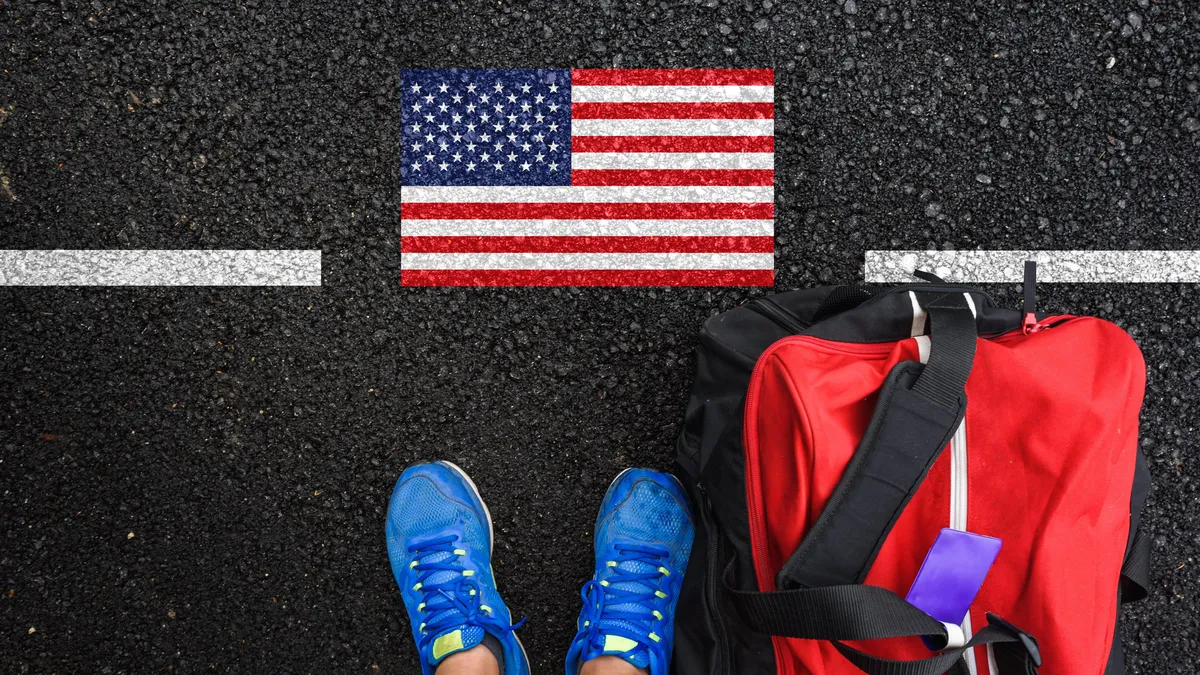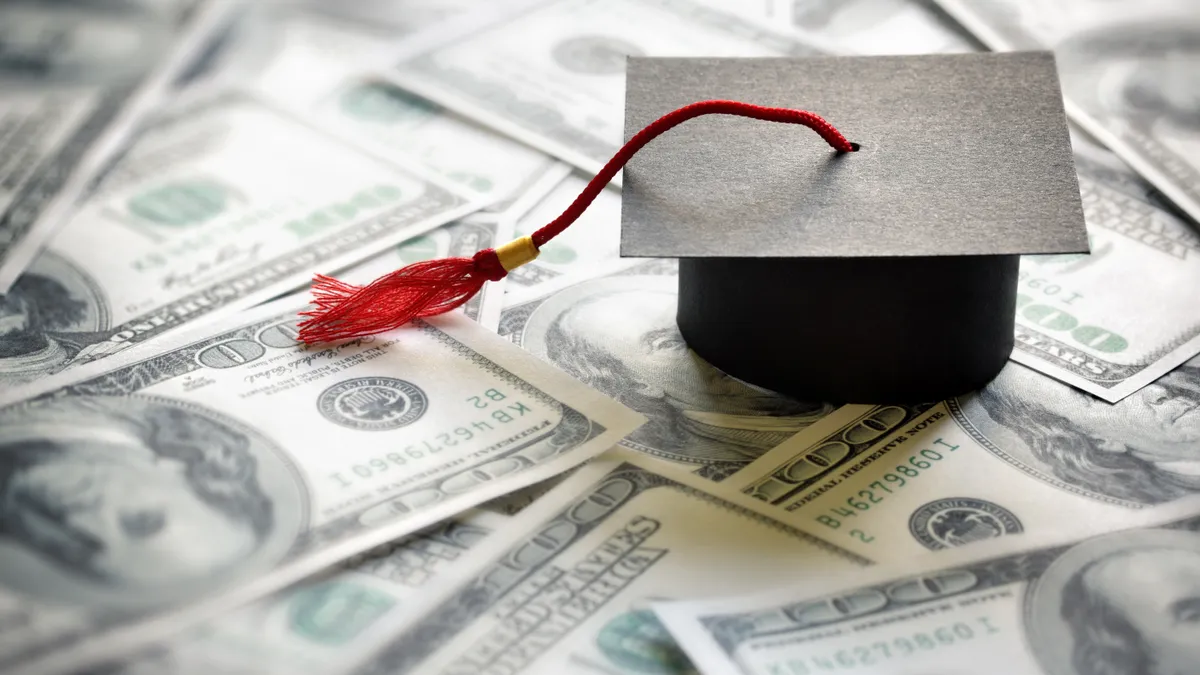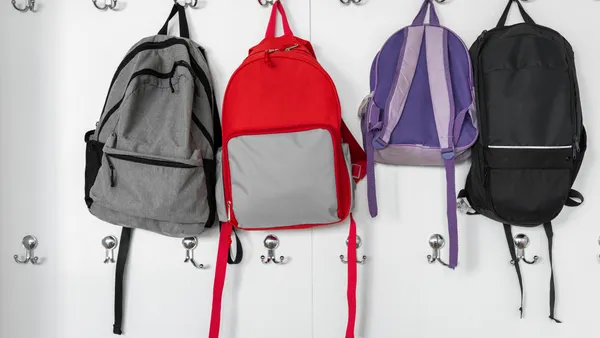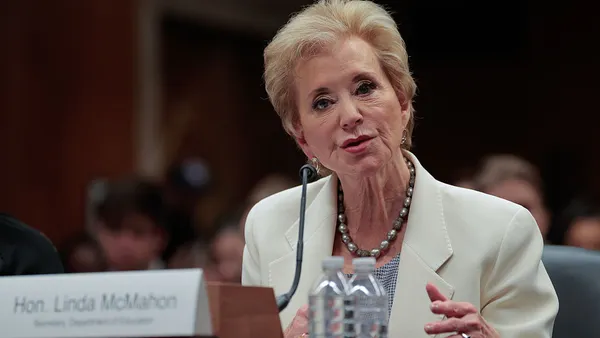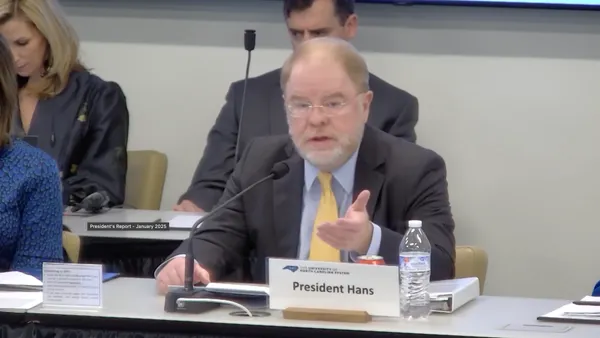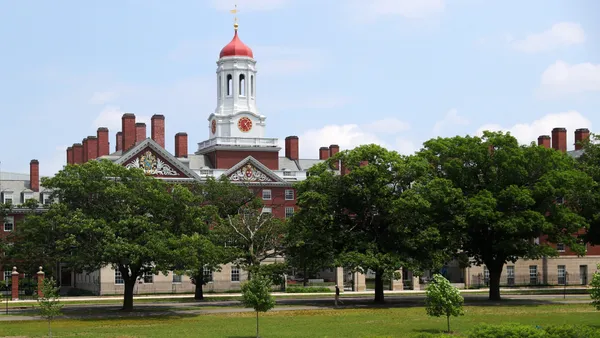Dive Brief:
- The number of international students at U.S. colleges hit an all-time high in the 2023-24 academic year, growing 6.6% year over year to reach more than 1.1 million students, according to the annual Open Doors report from the Institute of International Education and the U.S. Department of State.
- U.S. institutions enrolled over 502,000 international graduate students last year, another record-breaking total representing a 7.6% increase from 2022-23. However, international undergraduate enrollment declined 1.4% to roughly 343,000 students.
- Open Doors predicted continued growth of international enrollment for the 2024-25 academic year, based on its preliminary fall findings. But the federal government’s visa and work programs for international students could experience upheaval under President-elect Donald Trump’s second term, some experts say.
Dive Insight:
Though international students make up just 6% of higher education students, they play an important role in the sector and in the economy more broadly.
They are more likely than U.S. students to pay a college's full sticker price, offering a financial boon for tuition-dependent institutions. International college students contributed more than $50 billion to the U.S. economy in 2023, per data from the U.S. Department of Commerce.
The 6.6% increase in international students follows significant gains seen the year prior, when their enrollment jumped 11.5% year over year in 2022-23. With recent gains, international student enrollment has now recovered from steep losses seen during the pandemic.
Open Doors' total count includes international students attending U.S. colleges in person and those participating in the Optional Practical Training program. OPT allows student visa holders to work up to a year in the U.S. in their field of study, with a two-year extension available for those educated in STEM fields.
In the 2023-24 academic year, India outpaced China as the country sending the most students to the U.S. to study. Nearly 332,000 Indian nationals enrolled at U.S. institutions that year, an annual increase of 23.3%. That's compared with a total of about 277,000 Chinese students, a 4.2% year-over-year decrease.
The change comes as colleges focus on recruiting in India. A significant majority, 81%, told Open Doors that they prioritized outreach to India for graduate student recruitment, and 65% said they did so for undergraduate students.
Over half of international students, 56%, enrolled in STEM programs in 2023-24, with a quarter studying math and computer science, according to Open Doors. Around one-fifth, 19%, studied engineering.
The majority of states, 44, reported an increase in international enrollment. Some of the most populous states still host the most international students — in order, California, New York and Texas — but Open Doors noted that the largest year-over-year spikes could be found in the Midwest.
In 2023-24, Missouri saw a 34.6% year-over-year increase in international enrollment, reaching roughly 33,000 students. Michigan's international student body jumped 13.8% to just over 38,000 students during the same period, while Illinois saw a 12.6% increase representing about 62,000 students.
California still saw more international students than those three states combined — almost 141,000 — but that total represents just a 1.8% increase from 2022-23.
Open Doors predicted continuing growth among the U.S. international student population in 2024-25, based on an IIE survey of more than 680 institutions. Monday's report found that international enrollment rose 3% in fall 2024 compared to the year before. In a reversal from the 2023-24 findings, colleges reported a 6% increase in international undergraduate enrollment and a 2% decline in graduate students.
But Trump — who tightened U.S. visa programs during his first White House term — will take office just before the spring 2025 semester.
While on the campaign trail earlier this year, Trump said international students who graduate from U.S. colleges should automatically get green cards to stay in the country. But his campaign quickly added strict qualifiers to the then-candidate's statements, causing some to dismiss Trump's comment as merely a talking point, according to The Times of India, one of the country's largest English-language news sources.
Several policies during Trump’s first presidency made it more challenging for international students to study in the U.S. High-profile flip-flops in policies also sowed confusion among prospective students from abroad.
During the height of COVID-19, the Trump administration moved to deport international students enrolled solely in online classes, though the White House quickly reversed that policy amid backlash.
The administration also suspended issuances of H1-B temporary work visas from June 2020 to the end of that year. The White House considered pausing the OPT program as well, but it ultimately remained intact.
The conservative-led U.S. Supreme Court declined to hear a challenge to the program last year brought by a technology worker union. But Trump's history of vacillating policies could shake international students' faith in the programs on which they rely.
During the first three years of Trump’s administration, 12% fewer foreign students enrolled in U.S. colleges compared to the country's top international enrollment competitors, according to peer-reviewed research.
Nevertheless, Allan Goodman, CEO of IIE, expects international enrollment to remain resilient amid the political transition, he told reporters Wednesday.
"International enrollment in America has tended to increase," he said. "The only times that stopped were initially after 9/11 in 2001 and then in the wake of the pandemic."
Goodman said students are applying for and receiving record numbers of nonimmigrant visas — a trend he said he expects to continue.


